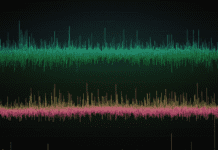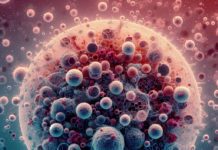A hug is universal. Hugs are so versatile, people all around the world use them to express everything from joy and affection to sadness and despair.
During times of social, emotional, and mental turmoil, individuals seek out the comfort and social bonding that hugs bestow.
Some people even believe a Hugs a Day is at the heart of humanity since it can transcend race, religion, gender, and age. Being a professional hugger and cuddler is a legitimate job.
Professional huggers and cuddlers provide hug benefits to people during all different points of their lives.
For instance, some specialize in using this touch therapy on premature babies in neonatal intensive care units.
Other hugs and cuddle professionals focus on nursing home or hospice situations, while others are available for hire by anyone in need of human touch.
Similarly, Ken Nwadike Jr., a peace activist and founder of the Free Hugs Project, attends rallies and protests to spread love and compassion.
During the 2016 protests in Charlotte, North Carolina, Nwadike wore a “free hugs” t-shirt and was captured sharing hugs during a time of riots, protesting, and intense emotion.
Benefits of Hugs + The Sensory Pathway
Hugs: The Sensory Pathway
To understand the benefits of hugs, we first have to take a look at the sensory pathway involved. When an individual has hugged the sensory receptors in the skin are activated.
There are several sensory receptors within the skin, and they respond to touch or distortion on the surface. Along with the sensory receptors, there are also sensory nerves that innervate the skin and respond to touch.
One group, in particular, the C-tactile afferents, plays a significant role in the effects of hugging and touch.
C-tactile afferents are found in hairy skin and respond optimally to a low-intensity, stroking brush and have been shown to fire most strongly to what people perceive as pleasant touch
The Touch Hypothesis
These sensory nerves also play a prominent role in the touch hypothesis.
This hypothesis states that the sensory nerves developed to signal the rewarding value of physical contact.
Once activated, the sensory receptors and nerves transduce the mechanical stimulation into electrical and chemical signals that travel along the peripheral nerve to the spinal cord and continue onto the opposite side of the brain.
This is done by one of two general parallel pathways.
The first pathway, associated with sensory information, is rapid and gives details about the vibration, pressure, and location of the stimulus.
It then projects it to the region in the brain that gathers all tactile information for processing, the somatosensory cortex.
On the surface of the somatosensory cortex is a map of the body, known as a homunculus, which processes the tactile information from the sensory nerves and touches receptors.
This information tells the individual where the touch occurred, as well as distinguishing whether the type of contact was a tap, squeeze, or caress.
The second pathway is slower and activates brain regions associated with:
- Social bonding
- Pleasure
- Pain
When the sensory nerves are activated, specifically the c-tactile afferents, information is sent to the posterior insular cortex in the brain.
The posterior insular cortex is a small, often overlooked, and misunderstood region deep between the folds of the parietal and lateral cortex of the brain.
Within this area, the mind and body integrated. The insula receives information about the physiological state of the body and then generates personal information that is transmitted to other brain structures.
Now that we’ve got a little pathway education under our belts let’s take a look at the fun part: hug benefits…
Hugs are vital for healthy childhood development.
Ever wonder what a hug does? It turns out, hugs/human contact is a vital first part of life. Interaction through touch is so crucial to the human experience, and especially to a child’s wellbeing.
The sense of touch is widely believed to be the first of the feelings that develop in utero.
Immediately following the birth and the early stages of life, physical contact (skin to skin) between the mother/caregiver and the infant is crucial for child development.
That’s why whether you’re having a natural childbirth or C-section, getting that mother-to-child, skin-to-skin contact as soon as possible is so significant.
The touch of the mother enhances feelings of attachment, security, and positive emotions. A 2010 study showed that babies with affectionate mothers grew up to be happy, resilient, less stressed, and less anxious adults
Studies using EEG to measure brain activity have shown cuddling increases brain responses when infants are presented with displays of affection from parents, which may cause lasting effects on the way the brain builds connections.
These interactions and new forming brain connections enable children to learn how to manage stressful situations on their own and how to manage their emotions appropriately.
On the other hand, children with little affection or skin to skin contact following birth have been shown to have cognitive, emotional, and physical issues, as well as have an increase in cortisol levels.
(Cortisol is the hormone commonly associated with stress.
In 2015, a study done at Notre Dame showed children experiencing just a small amount of touching and hugging in early infancy grew up to have worse health and more emotional problems compared to kids suffering more hugs.
This illustrates the damaging effects of a lack of affection.
Hugs jack up your oxytocin.
What is the emoji for a hug? 🤗 There you go! But unfortunately, sending someone, a hug emoji just isn’t going to cut it when it comes to inducing the “love hormone” oxytocin.
Following activation of the C-tactile afferents the ‘love’ hormone, oxytocin, is released from the neurons projecting from the hypothalamus,
the region of the brain that is part of the limbic system or reward system and it is responsible for the regulation of many of the metabolic processes of the autonomic nervous system.
Oxytocin is made within the hypothalamus and is mostly known for its effects on social bonding.
Neurons that produce oxytocin project widely throughout the brain, including into regulatory regions associated with social interaction, fear, aggression, calm, and stress
While much of the oxytocin that is released acts on various structures that have an impact outside of the brain,
some of the oxytocin remains within the brain and influences behavior, mood and physiology by acting on the limbic (emotion) center, stimulating the feeling of contentment, decreasing anxiety/stress, and increasing social bonding.
Hugs provide strong immune system support.
The increase of oxytocin also helps the effectiveness of the immune system.
Yes, that’s right, hugging can be considered a natural immune system booster.
Hugging induces the “stress-buffering effect” in which an individual that is hugged often is less likely to become sick due to stress-induced illness
Oxytocin acts on the pituitary gland to decrease the stress hormone cortisol.
Along with a decrease in cortisol, social support through physical contact also allows an individual to cope with stressful situations rather than wearing down their immune system leaving room for illness.
A study in 2015 at Carnegie Mellon exposed healthy adults to the cold virus and found that individuals with social support had a decreased chance of getting sick due to the stress-induced buffering effects of hugging.
Those individuals that did get sick had less severe symptoms if they were hugged and had stable social support then those that did not.
Simultaneously, as the activated sensory receptors send signals to the brain, messages are also sent to the vagus nerve.
The vagus nerve is the cranial nerve that helps mediate the parasympathetic response of the heart, lungs, and digestive tract, which decreases the blood pressure helping both individuals involved in the hug feel calmer.
In animal studies, activation of the vagus nerve has also been shown to increase the release of oxytocin, decreasing the heart rate and cortisol, leaving the person feeling less stressed and more relaxed.
Hugging produces “chill out” neurotransmitters.
Several neurotransmitters are increased in the brain following the activation of the sensory neurons that play a role in the positive emotions associated with being touched.
The neurotransmitter, dopamine, is associated with motivation, goals, and reinforcing behavior.
Hugging releases dopamine within the limbic pathway in the brain, creating feelings of pleasure and satisfaction.
Another neurotransmitter, serotonin, is increased due to the activation of sensory receptors and leads to a general feeling of satisfaction and an increase in mood.
It is through the increased release of oxytocin, in conjunction with the neurotransmitters, that creates the soothing and calming feelings one experiences following a hug.
How Many Hugs a Day Does a Person Need?
How many hugs a day does a person need? Although not technically proven by science, the late psychotherapist Virginia Satir once said:
“We need four hugs a day for survival. We need eight hugs a day for maintenance. We need 12 hugs a day for growth.”
Given the science of hug benefits we learned above, I agree: We could probably all stand to give (and receive) more hugs every day.
Final Thoughts on Hugs
- The simple act of human touch, including a hug, causes a cascade of events, beginning with the sensation of a bit on the skin traveling along nerves to the brain, causing changes that affect the entire body.
- Sensory receptors and nerves work together, sending signals to the central nervous system to provide enough information for the individual to create an appropriate motor and emotional response.
- This allows an individual to engage with their environment through the neuronal processing of a touch stimulus, which leads to eliciting a response that is often emotional.
- Hugging increases oxytocin and other neurotransmitters associated with happiness and pleasure while decreasing stress hormones, blood pressure, and heart rate.
- The overall general effects of hugging lead to an increase in social bonding, relaxation, and a decrease in stress and therefore result in a better quality of life.








